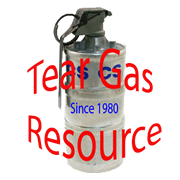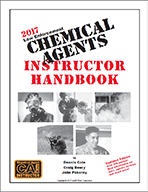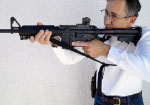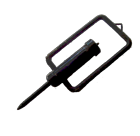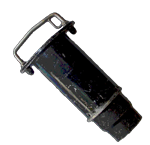I’ve recently been asked how to cope with the media at a SWAT incident where you have used a non-lethal chemical agent. I did some research and the best short answer I found was written by Marty Boyer of Communication Advantage. She has written a handbook titled "The Media Survival Pocketbook".
Be prepared to answer hard questions and if possible develop answers ahead of time. Talk in “sound bites. ” This is especially important with broadcast media when you may have only about 12 seconds to respond. Your key message should be short and pithy. Practice limiting your answers to 25 words or less. If reporters want more, they will ask more questions.
You must be aware of the differences between lethal force, less lethal force and non-lethal force. You should always be aware of how safe the use of your agent has been for your department. If you haven’t used it a lot know what the results have been from other agencies that use it. Be an expert! Look at this website that is used by some media to study the impacts of tear gas. www.teargasresource.com (This not Tear Gas Resources) It can give you an understanding of where their questions may come from.
The following are a few excepts from Marty Boyer’s handbook that can benefit us as we deal with the media. Here are some precepts that may help you when you are handling hostile questions and situations:
- Don't repeat hostile words or questions you don't like. Counter them with: "That may be your perception, but it is not accurate. The truth is…."
- Counter the loaded question. For example, a question that accuses might begin with, "Haven't you been..." The question can be redirected: "What we have been doing is…."
- Don't be forced into bad choices. Try this approach, "Neither is accurate but I believe…."
- Beware of "charged" wording. If a question feels charged or slanted to a particular negative meaning, reword it before answering: "So it's absolutely clear, what you are asking is…."
- Don't let machine gun style questions throw you. You needn't stand for rudeness. Answer the most appropriate question in a machine gun series. Say you will be glad to answer more questions once you have dealt with the first. If necessary, politely but firmly tell the reporter you will respond if he or she will not interrupt you.
- Defuse hecklers. Hecklers are not unusual at a press conference. Answer curtly while making it apparent you are seeking the next question from the other side of the room. This body language will usually cut off a heckler.
- Get out of the interview at the appropriate time. When the interview has ceased being productive, or is becoming counter-productive, simply say you have time for one more question. The reporters often appreciate the help calling it over when it is and you have politely set your limit. Be prepared to follow through once you have announced your limit.
- Don't answer more than you have been asked. More damage is done by interviewees who digress, or expand beyond the questions asked, than by reporters. Don't give into the temptation, and don't try to fill in awkward silences. To date, no one has found a way to print, broadcast or telecast silence.
- If appropriate, make a follow-up call to the reporter so that each of you has the opportunity to correct, clarify, or add to the interview. Use the opportunity to reiterate your key message too!
- THERE IS NO SUCH THING, AS OFF THE RECORD. If you don't want to see it in print don't say it.
